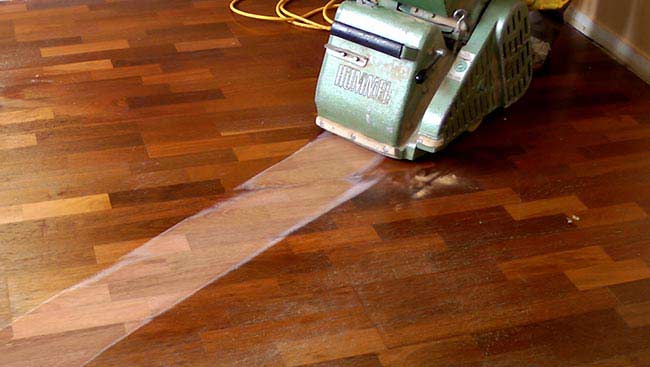One of the appeals of hardwood flooring is that it can be sanded down if it begins to show wear and tear. Sanding and refinishing a hardwood floor can bring it back to brand new again. Stains, scratches, dents and other imperfections are simply buffed out. Whether or not you want to do this yourself, however, will depend on your budget, the free time you have available and your muscle power. To find out more about how to sand hardwood flooring, check out our article.
Orbital Vs Drum Sanders
If you want to attempt to sand your hardwood floor yourself, but have no previous experience doing so, you should probably consider using an orbital sander rather than a drum sander. Orbital sanders are fairly easy to use whereas drum sanders can quickly ruin a hardwood floor with deep gouges. Drum sanders are typically used on floors that have deep scratches or are severely stained. If this is the case with your floors, you might consider hiring a professional. Orbital sanders, on the other hand, will only remove a thin layer of wood and are therefore generally used on floors that have relatively minor imperfections.
Hardwood Flooring Thickness
If you have engineered hardwood or your solid hardwood floor has been sanded down several times before, you’ll need to be careful about how much sanding you intend to do. With engineered hardwood it’s important to be careful not to sand through the thin layer of hardwood veneer. For solid hardwood that’s been previously sanded, you‘ll need to ensure it’s still thick enough to withstand another sanding.
Multiple Sandings
When sanding hardwood you’ll need to begin with a coarse grit sandpaper and work your way down to finer grits. You’ll likely need to sand the floor at least four different times depending on how damaged the floors are. Between each sanding, make sure to sweep up the remaining dust.
Edging
After the main part of a room is done with a specific grit of sandpaper, you’ll need to follow up by sanding the edges with the same grit. Sometimes the edges will require more work because they don’t receive as much foot traffic as the middle of the room.
Vacuuming
After you’ve passed over the floor enough times it’s important to get rid of all the leftover dust before any finishing takes place. A vacuum cleaner is the best bet for this job. Follow this is with another sweeping with a microfibre broom and a final vacuuming to ensure all the dust is removed.

